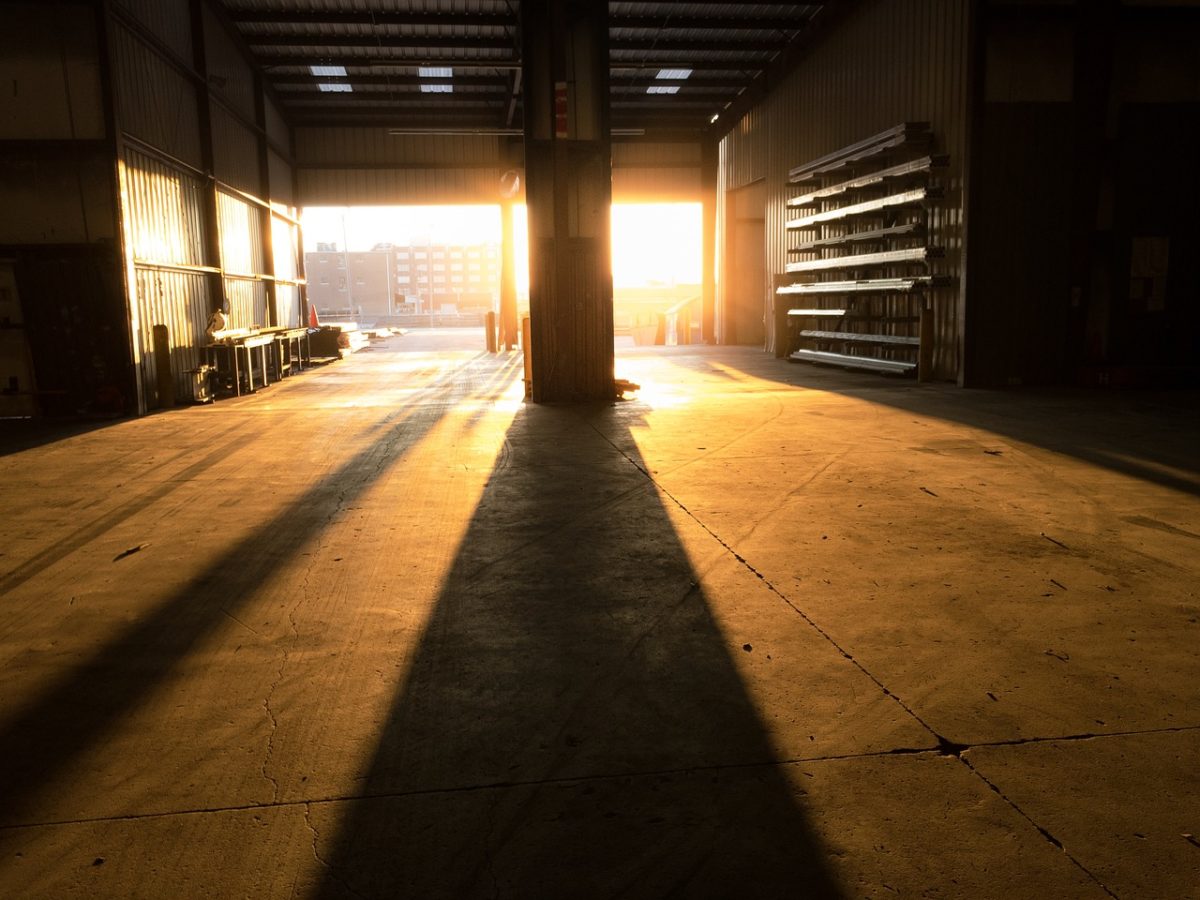Are cracks in garage floor normal occurrences? Learning what’s OK and how to prevent unnecessary damage will help you avoid costly repairs and extend the lifespan of your garage. Here are some tips you can use to keep your garage in great shape for years.
Smooth, clean garage floors are the object of envy from many homeowners across the country. Neat freaks and people who work on their cars love the look of a smooth, uniform garage floor.
These days, keeping things tidy and free from grease spots and cracks is easier with things like epoxy coatings. However, most garage floors in residential homes and commercial garages in the country are still concrete.
Why? Well, concrete is a versatile, relatively affordable material well-suited for garages. Your typical garage will take a beating over the years from cars coming and going and whatever else happens inside.
These days people use garages for storage, a workspace, and even an extension of their homes.
If your garage floor is cracking, or you are interested in buying a property with cracks in the garage floor, just know that it’s normal for there to be minor cracking. Small cracks usually pose no structural threat to the home or building, so there’s not much concern there.
If you’re worried about how the cracks look, we’ll cover some ways you can both prevent cracks from happening and how to deal with cracks should they appear.
Why Cracks Happen in Your Garage
Most garages are perfectly capable of taking on heavy loads. Cars and trucks weigh thousands of pounds each. Add to that all of the bikes, tool cabinets, toys, and wherever else you store in your garage, and it has to be strong.
Commercial garages typically hold much more weight than residential garages. But, again, this is because they’re housing heavier vehicles and machinery.
Typically, concrete has to sit anywhere between 10 days and a full month before they start bearing heavy loads. A normal concrete slab needs approximately 30 days to reach full strength.
Are cracks in garage floor normal? People worried about small cracks should know that they are, most frequently, the result of contractions in the concrete due to changes in weather.
When the weather heats up, concrete expands. When it cools, your concrete will contract. If you drive on the road in places with four distinct seasons, you’ll probably notice that there are cracks and tar filling cracks almost everywhere you go. It’s part of normal road maintenance.
Cracks can also occur as more and more weight goes onto the concrete. Although concrete is incredibly strong, it’s not invincible; surface cracks appear when heavy vehicles sit on concrete for prolonged periods.
Are Cracks in Garage Floor Normal? – What to Look for
Just because small cracks are normal doesn’t mean you should dismiss any cracks in your garage floor. Even small cracks, at some point, may need maintenance to prevent them from getting bigger and becoming severe issues.
Here are some trouble signs to watch out for:
- Overload – Overloading cracks happen when you’re putting too much weight on your garage floor. Over time, a void becomes an issue, and your garage begins to deteriorate. If you’re concerned, you should do some work to determine the PSI of your concrete. While this can be a challenge for property owners who purchased a home or commercial garage already installed, hunting down the exact figure will help you know how much weight is appropriate.
- Root Damage – Tree roots that grow under and up into your driveway or garage can be a big issue. It’s hard to stop roots from growing, though your local tree service may be able to shave the roots or cut them before they grow too far into your property. However, anytime you mess with roots, you have to pay attention to whether the tree begins to lean into your property.
- Severe Cold – Sometimes, severe cold temperatures cause concrete to heave, and major cracks develop. You will likely need professional concrete repair to restore your garage floor when this happens. Left alone, heaving concrete can present structural risks.
Fixing Cracks in Your Garage Floor – The Basics
Large cracks and seriously uneven concrete damage require professional repairs. If you have extensive experience mixing and repairing concrete, go for it. Otherwise, give your local contractor a call to come to have a look.
On the other hand, most drying or settling cracks are well within DIY territory. Repairs are usually cosmetic but getting to settling cracks and other weather-related cracks can spare you headaches in the future. Here are some steps that you can follow to fix cracks on your garage floor.
- Cutting Grooves Around the Cracks – Using a diamond blade designed for shaving concrete, cut out small grooves (approx. half an inch wide) on either side of the crack.
- Remove Dust & Chips – After cutting, make sure to clean the crack and the groove. Ideally, the track will be free of dust and any chipped concrete from your cutting.
- Wash the Crack – If you have a power washer, great. If not, do your best to get the crack and grooves as clean as possible.
- Fill the Grooves – Fill the grooves and as much of the crack as possible with polymer-modified cement. Only fill the crack partially, leaving around half an inch between the new cement and your garage floor surface.
- Let It Sit – Wait for around 72 hours until the cement dries.
- Resurface – Once the new cement is dry, fill the top of the crack opening with a concrete resurfacing mixture. Smooth it out as much as possible. A rubber tool is usually the most effective. Taper the edges around the new cement for a smooth finish.
Polymer Vs. Caulking – What’s Better?
Property owners contact us frequently to ask how to handle caulk inside garage floor cracks. Caulk is a fast, simple solution that many property owners use to fill in cracks and prevent water from getting in. While it certainly works to some degree, we recommend digging grooves to remove the affected cement and refinishing with polymer.
Polymer is a better long-term solution because it guarantees good performance and looks much better. With caulk, you’re essentially trying to freeze the cracks where they are and aren’t doing much about the way your garage floor looks.
If you’re dealing with a garage floor with caulk already in the cracks, then taking out the caulk will be an extra and, unfortunately, painstaking step.
Do Cracks Come Back After Repairs?
The hard part about fixing cracks is that they could return at some point. You can never predict how your garage floor will react to next year’s temperature changes.
Unless you’re lucky, you’ll likely have to deal with cracks in your garage floor in perpetuity. If they don’t bother you, then leave them! They’re probably fine. Besides some cosmetic damage, hairline cracks pose no real threat to your garage.
If you’re extremely worried about cracks, you can always cover your garage floor with epoxy that’s extremely resistant to cracks and stains. It’s a durable solution that looks great and will last for years.
Are Cracks in Garage Floor Normal? Ask a Contractor
If you’re worried about cracks, it’s always a good idea to ask a contractor for their opinion. Most local driveway installation and repair companies will gladly send someone to your home or business to take a look at your garage floor and offer some recommendations. However, if you’re worried about finding the right company, here are a few things to keep in mind.
- Read Online Reviews – Check out company reviews before calling any contractors. Read about past customers’ experiences and only go with a company that has a proven track record of success.
- Call a Few Companies – Don’t just call one company. Instead, pick up the phone and give a few different contractors a ring. Tell them about your garage and ask them what they think. They’ll offer to send someone to you to take a look most of the time.
- Get Some Free Estimates – Your contractor will quote you on what repairs will cost. Beware of any contractors who try to make you feel scared about the severity of your cracks. After reading this, you should know that small cracks are no big deal. Certainly, though, any heaving concrete or large cracks are a concern. Weigh how you feel dealing with the contractor and price to make the right decision.
Give Repairs a DIY Try!
If you only have small cracks, follow our steps and try repairs yourself. It will be a good learning experience. You won’t really cause any harm, and it will help you build confidence to take on larger projects down the line. Garage floor maintenance is one of those things every property owner faces. Keep an eye on them and tackle them when you either hate looking at them or they start to get bigger.




